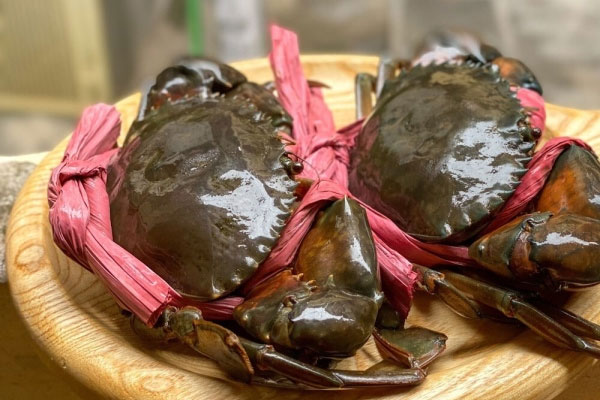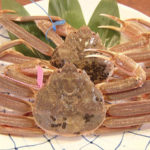Crab is a familiar seafood in every Vietnamese family’s meal. Crabs can be prepared in many different dishes and they provide a lot of calcium and nutrients. But how to choose delicious crabs with a lot of meat is something not everyone knows. And is male crab or female crab more nutritious?
 How to distinguish male and female crabs?
How to distinguish male and female crabs?
How to distinguish male and female crabs
Just pay attention to a few characteristics below, and you can easily distinguish male and female crabs
– Crab apron
The clearest way to distinguish male and female crabs is to look at the underside. If it is a male crab, the apron will be narrow and triangular in shape. Female crabs have a wider apron, round in shape, and during the breeding season this apron will contain a lot of eggs.
 The crab apron is the easiest part to distinguish between male and female crabs.
The crab apron is the easiest part to distinguish between male and female crabs.
– Crab shell
In terms of shape, female crabs have a wider shell, rounder in shape, while male crabs have a longer and sleeker shell. Male crabs have a darker brown color than female crabs.
To choose delicious crabs, you can gently press the crab shell with your hand. If it has good elasticity, the meat of that crab will be more delicious and have more meat. But if the crab shell is soft when pressed, then that crab will have less meat and fewer shells. In addition, you should not choose crabs that are black and no longer move, as they are dead crabs.
– Crab claws
Male crabs have larger and stronger claws, with a hard outer shell and a darker brown color than female crabs. Female crab claws are slightly smaller than male crab claws, and the color of female crab claws is also lighter.
Are male or female crabs more nutritious?
For different types of crabs, their nutritional value will vary, and it also depends on each person’s taste preferences.
– If you prefer a delicious and non-greasy meat, then male crabs are a good choice. The meat of male crabs will have a refreshing and characteristic taste.
– If you like the rich and creamy taste of crab eggs, then female crabs are a good choice. The combination of female crab meat with golden and creamy eggs creates an attractive and nutritious flavor.
Crabs are expensive food, so pay attention to the above characteristics when choosing crabs that are suitable for your family’s taste.
According to VTC






































